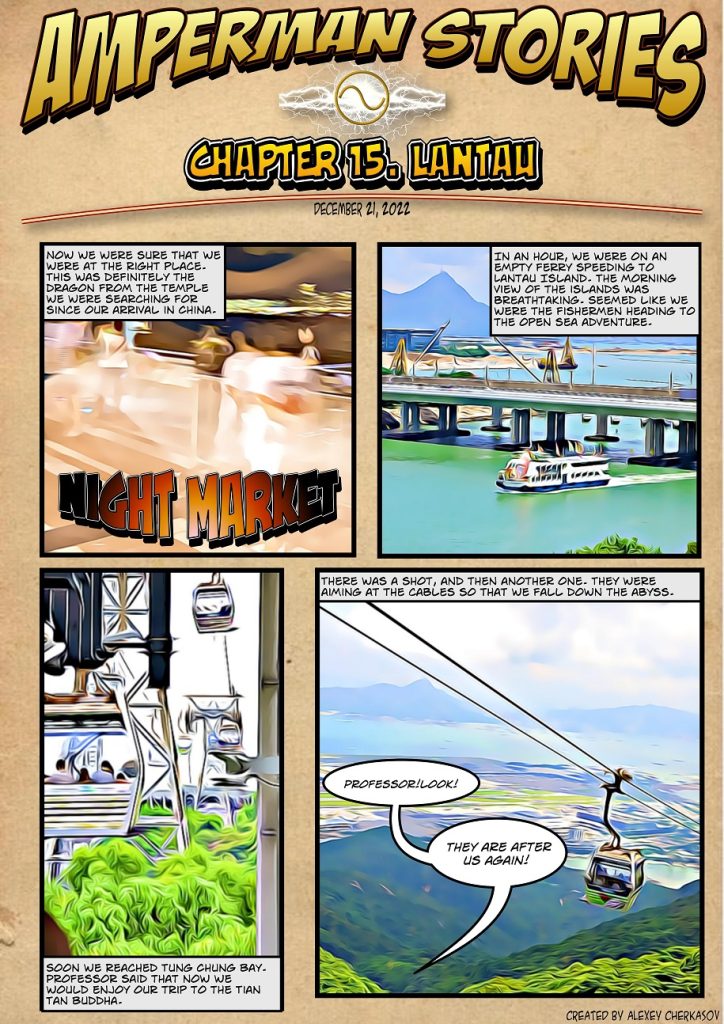The stall was full of dragons. There were figurines of dragons, T-shirts with dragons, paintings and drawings with dragons, and many other things with this mythical creature. There was even a dragon scale if Professor understood right the sign on a little marble box.
Some of the items at the stall were covered with a very thick layer of dust as if they were kept for a long time in some abandoned storage or some kind of room. Some were made of wood, some of stone, some of gold and silver, and there was one that looked like it was made of some sort of stone or metal or a mix. Professor Silicon said that this was definitely polycrystalline silicon.
Polycrystalline silicon, or multicrystalline silicon, is a high-purity, polycrystalline form of silicon, used as a raw material by the solar photovoltaic and electronics industry. Polysilicon is produced from metallurgical grade silicon by a chemical purification process, called the Siemens process. This process involves the distillation of volatile silicon compounds, and their decomposition into silicon at high temperatures. When produced for the electronics industry, polysilicon contains impurity levels of less than one part per billion, while polycrystalline solar-grade silicon is generally less pure.
The polysilicon feedstock – large rods, usually broken into chunks of specific sizes and packaged in clean rooms before shipment – is directly cast into multicrystalline ingots or submitted to a recrystallization process to grow single crystal boules. The boules are then sliced into thin silicon wafers and used to produce semiconductor devices.

Professor Silicon was amazed by the quality of this dragon figurine. It was so fine and precise and must have taken very advanced technology to make it. Indeed, the dragon looked alive. It was the size of a smartphone, but every detail was telling that this was a real masterpiece.
Now we were sure that we were at the right place. This was definitely the dragon from the temple we were searching for since our arrival in China. We decided to wait for a bit for the owner of this stall to appear. Though we were not yet sure who sent us the note to come here in the first place.
Professor was mumbling something to himself while I was turning my head around the place to try to get a glimpse of any familiar face or a face to who we could be familiar. There were even more people now in the street if it was somehow possible. And this is when we heard a person calling for us. The voice was coming from behind the stall. It asked us to hurry up.
We squeezed between the stalls to get to the part of the street between the main buildings and the market. It was very narrow and very dark. It was full of smoke coming from kitchens in this building and from people smoking heavily like an old train. There was someone standing in front of us, but because of the darkness here and the extreme lights in the market, we could not clearly see who that was. Finally, the man lit a match and Professor Silicon gasped some air to say that it was Lee.
Lee said we need to hurry before it is too late. He promised to explain everything later when we are in a safe place. In a distance, we heard people screaming. The scream was coming from the market, and in a distance, we could see three or four men running in our direction. We were following Lee when he turned and entered one of the buildings on this street.
The building inside was the opposite of how it looked outside. While we were step by step after Lee, we could see that this building was a mix of the underground casino, Chinese shadow theatre, den of the drug dealers, cathouses, and bars. It was a kingdom of the joy of everything illegal. That was the last place we thought to be, but Lee was heading forward through the narrow hallways of this building. We made so many turns, so now we could be sure no one was behind us anymore. But Lee was in a hurry to leave this place. And soon we somehow got back to the market street. It was completely dark now. The stalls were almost gone, and the screaming crowd disappeared.
Lee headed to the building on the opposite side of the street. He touched the wall and it moved inside opening a narrow passage. We followed Lee. Now we were going downstairs, and the sounds from the street disappeared very soon. It was quiet and cold here. Soon we reached the bottom of this passage leading to a narrow street underground. Lee stopped and said that now we were safe.
What a surprise it was when Lee said he was not Lee. He was Lee’s twin brother Li. According to Li, his brother disappeared several weeks ago. And so far, no one could understand what happened to him. The last time Li met Lee was when they discussed our trip to China with Professor Silicon. This is the reason he was expecting us here in Hong Kong. Li said that his brother asked him to help us if we ever need his help. And based on what he has heard lately, he was sure that he had to accompany us tonight.
We were walking right under the market street, sixty-six meters underground. It was a secret passage used by the monarchs before the British came to Hong Kong during the Opium Wars. It connected Kowloon with Hong Kong Island. It went straight from what was now Yau Ma Tei to Lung Fu Shan. Li said that we would be there by the early morning.
The more we went the more humid and harder to breathe it got. Now we were under Victoria Harbor, and we could feel all the massive pressure on our heads. Even though the length of this tunnel was less than ten kilometers, we managed to get to Lung Fu Shan only by five in the morning, just like Li told us.
On our way to Hong Kong Island Li mentioned that as soon as we reach the end of the tunnel, we would have to go to the harbor ferry pier and take the one going to the Tung Chung station at Lantau Island. There we would need to go to the Tian Tan Buddha and find the way to the temple hidden on Lantau Island. No one knew where it was, and those who knew would never speak of it. But the legend said the path to it was once at the place where the Tian Tan Buddha was built, and only a few could find it and uncover the way of the Silicon Dragon.
Before leaving us to try to distract our followers, Li gave me the little dragon from his stall we liked so much. He said it will help us get where we have to be if we ever find the path hidden on the island. He wished us good luck and headed back to the tunnel. And we together with Professor Silicon hurried to the ferry. In an hour, we were on an empty ferry speeding to Lantau Island. The morning view of the islands was breathtaking. Seemed like we were the fishermen heading to the open sea adventure.
Soon we reached Tung Chung Bay. Professor said that now we would enjoy our trip to the Tian Tan Buddha. He has been waiting for it for a very long time. As it turned out, not long ago they put into operation the bicable gondola lift connecting Tung Chung with Ngong Ping – the place of the Tian Tan Buddha. Professor continued that Ngong Ping Cable Car was a 5.7-kilometer-long bicable gondola lift system. The cable car journey would be a 25-minute aerial trip.
Another important thing the Professor was proud of, was that the power semiconductors for this system were provided by TSemics Industries. He was always excited and happy to see the end application of power semiconductors in action.
During our 25-minute journey on a cable car with a floor made of glass, we could see the amazing panoramic views over Lantau Island, the South China Sea, and Hong Kong airport, to name a few. As we were approaching the Ngong Ping station, we saw the Tian Tan Buddha and a beautiful monastery. And these were not the only things we could see. Professor said that we had been followed again. In the next cable car, there were people aiming at us with a rifle.
There was a shot, and then another one. They were aiming at the cables so that we fall down the abyss. Two more shots and our cable car started to swing from side to side. Yet it was still moving in the right direction. When we arrive, we will have not more than a minute to escape, so we needed to act fast.

